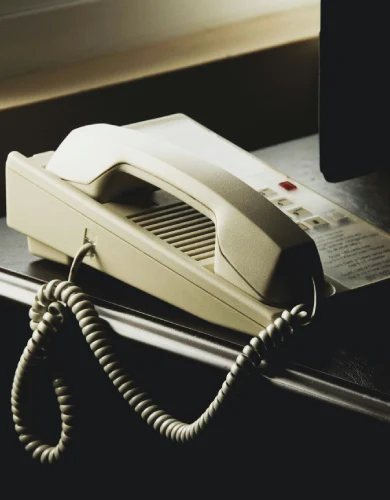SoGEA broadband for businesses
SoGEA is the technology behind “Part Fibre” or “Standard Fibre” connections currently offered by broadband providers in the UK. It delivers fast and reliable internet without the need for a traditional phone line.
As the modern equivalent of FTTC, it is ideal for small businesses without a critical need for high-performance broadband. Examples include shops, cafés and restaurants, small offices, and remote farms.
This guide explains what SoGEA means, what its purpose is, and which providers offer it.
💡 Find the best SoGEA business broadband deals today using our free business broadband comparison service.
What is SoGEA broadband?
SoGEA is a part-fibre broadband service offered through the Openreach network, providing internet connectivity without a traditional phone line.
It is the latest iteration of FTTC (“Fibre to the Cabinet”) broadband, which uses fibre optic cable to a local street cabinet and then copper cabling to connect individual properties.
Broadband providers typically market SoGEA as “Standard Fibre” or “Part Fibre” because of its mixed use of both fibre and copper.
The key difference between SoGEA and older FTTC connections is that SoGEA is a broadband-only service.
What does SoGEA stand for?
SoGEA is an acronym for Single Order Generic Ethernet Access, with the full name reflecting how the technology works:
- Single Order: Previously, FTTC services required a phone line to be ordered alongside broadband. “Single Order” signifies that SoGEA provides broadband only, without a phone line.
- Generic Ethernet Access: A technical term for delivering internet access using existing fibre and copper infrastructure.
Why was SoGEA introduced?
SoGEA was first offered in 2019 as part of preparations for the big switch-off.
From 2027, Openreach will retire traditional landline services over copper wires, shifting exclusively to broadband internet over this network.
While FTTC can technically deliver broadband without a landline, SoGEA is purpose-built for this, making it a more efficient and future-ready option.
This is especially important as millions of homes and businesses, particularly in rural and remote areas, that still rely on copper cables for broadband.
SoGEA availability and the full fibre rollout
SoGEA is offered as a broadband solution only in areas where full fibre broadband is not yet available.
Openreach is currently rolling out full fibre broadband infrastructure, aiming to cover 25 million properties by the end of 2025.
Full fibre does not rely on copper cables and is significantly faster and more reliable than SoGEA.
SoGEA connections are intended as a stepping stone for premises that do not yet have access to full fibre while this technology is deployed nationwide.
💡You can check the status of the full fibre rollout in your area using the Openreach fibre checker.
How does a SoGEA connection work?
Here we explain how SoGEA delivers a broadband-only connection using the copper phone line already installed in most British properties.
Openreach fibre infrastructure
Like all Openreach fibre optic business broadband services, SoGEA uses the nationwide fibre network:
- Provider’s servers: The internet connection begins at your business broadband provider’s servers, which manage data and route it onto the World Wide Web.
- Local exchange: Data travels through fibre optic cables to the local exchange, a central hub that connects multiple properties to the internet.
- Street cabinet: Data is then routed from the local exchange to a street cabinet near your premises via fibre optic cables.
Last mile copper connection
The final part of the SoGEA connection relies on a copper wire linking the nearest Openreach street cabinet to individual properties.
Here are the individual steps:
- Copper cables: The internet connection is carried from the street cabinet to your premises over existing copper telephone lines using VDSL2 (Very-high-bit-rate Digital Subscriber Line 2) technology. This provides download speeds of up to 80 Mbps.
- Modem/router: A modem/router connects to the incoming copper line, translating the signal into a usable internet connection.
- Devices: The modem/router distributes the internet connection to your devices via wired Ethernet or Wi-Fi.
Phone line service
The business broadband router provided with a SoGEA connection has no phone port and cannot split broadband and voice signals.
Instead, a SoGEA connection can provide a business phone line using VoIP technology, where call data is transmitted and received via the broadband connection.
Visit our business VoIP phone systems page to discover the best VoIP solution for your business.
SoGEA broadband installation process
Installing SoGEA broadband at a business or home is straightforward and typically does not require a visit from an engineer.
SoGEA uses the same copper line from the cabinet to the premises as traditional phone services and FTTC, which are already present in most properties.
If your property already has a working or recently active Openreach line, an engineer visit will typically not be required. Here’s how the process works:
- Sign up to a SoGEA broadband deal.
- Receive a pre-configured router in the post.
- Plug the router into your BT master socket.
- Your connection will go live on your activation date.
If your property does not have a copper phone line, then an engineer visit will be required. For more information, visit our full guide to business broadband installations.
Benefits of SoGEA broadband
The table below outlines the key features and benefits of SoGEA broadband, highlighting the differences compared with earlier versions of FTTC broadband.
| SoGEA Feature | Description | SoGEA vs FTTC |
|---|---|---|
| Infrastructure | Uses existing copper lines for the final leg from the street cabinet to the premises. | Both use the same network infrastructure. |
| No landline | Offers broadband only; does not require a traditional landline. | FTTC includes a phone line service. |
| Simple installation | It is a simple installation process as it relies on the copper phone cables already installed at most properties. | Both have the same installation process. |
| Low costs | SoGEA technology offers low domestic and business broadband prices as it does not require landline installation or line rental. | FTTC is typically more expensive due to the traditional phone line component. |
| More reliable | Higher reliability with fewer potential points of failure, since it's a single service. | FTTC is slightly less reliable as it must focus on both broadband and phone services. |
| Speeds | A SoGEA broadband connection offers domestic and business broadband speeds of up to 80Mbps, depending on the distance to the nearest street cabinet. | Both offer similar speeds. |
| Service availability | Available in areas where fibre-to-the-cabinet (FTTC) broadband is offered by Openreach. | Older FTTC broadband services are no longer actively marketed by domestic or business broadband providers. |
SoGEA broadband providers
Here is a list of the leading UK business broadband providers offering SoGEA broadband:
| Provider | Description |
|---|---|
| BT Business Broadband | One of the first to offer SoGEA, providing reliable and widespread coverage. |
| TalkTalk Business Broadband | Offers competitive SoGEA packages tailored for business needs. |
| Sky Business Broadband | Provides SoGEA services with a focus on robust customer support. |
| Vodafone Business Broadband | Offers SoGEA with flexible plans and strong network performance. |
| Zen Internet | Known for excellent customer service and high-quality SoGEA broadband options. |
| Gamma | Specialises in unified communications and SoGEA broadband for businesses. |
| Daisy Communications | Provides a range of telecom services, including SoGEA broadband. |
Note: Local or smaller providers offering SoGEA may not be listed here.
SoGEA business broadband – FAQs
Our business broadband experts answer commonly asked questions about SoGEA.
Is SoGEA the same as full fibre broadband?
No, SoGEA is not the same as full fibre broadband.
SoGEA uses the existing fibre-to-the-cabinet (FTTC) infrastructure, with fibre optic cables running to the street cabinet and copper cables connecting the cabinet to the premises.
In contrast, full fibre broadband uses fibre optic cables directly to the premises (“fibre-to-the-premises” or FTTP), offering faster speeds and greater reliability.
Do you need a SoGEA adapter?
No, a specific SoGEA adapter is not required.
All your business needs is a compatible modem/router, provided by your business broadband provider, which will be configured to work with SoGEA.
Do I need a new router to install SoGEA?
Yes, in most cases, your broadband provider will supply a new modem/router specifically configured for SoGEA.
Even if your existing FTTC router is compatible, it is recommended to use the one provided to ensure compliance with the latest business broadband cybersecurity features.
Using older devices may pose a security risk and leave your business vulnerable to emerging cybersecurity threats.
How do I get SoGEA for my business?
Most commercial properties in the UK already have a copper connection suitable for SoGEA broadband.
To secure a SoGEA broadband deal, visit our small business broadband page to find the best SoGEA providers in your area.
A SoGEA connection can be activated through a straightforward business broadband switch, facilitated by our experts.
Can SoGEA be used for redundancy?
SoGEA is also a proven and cost-effective broadband redundancy solution for larger businesses.
Business broadband failover software can switch to a SoGEA connection as a backup, prioritising business-critical traffic if there is an issue with the primary leased line broadband connection.

